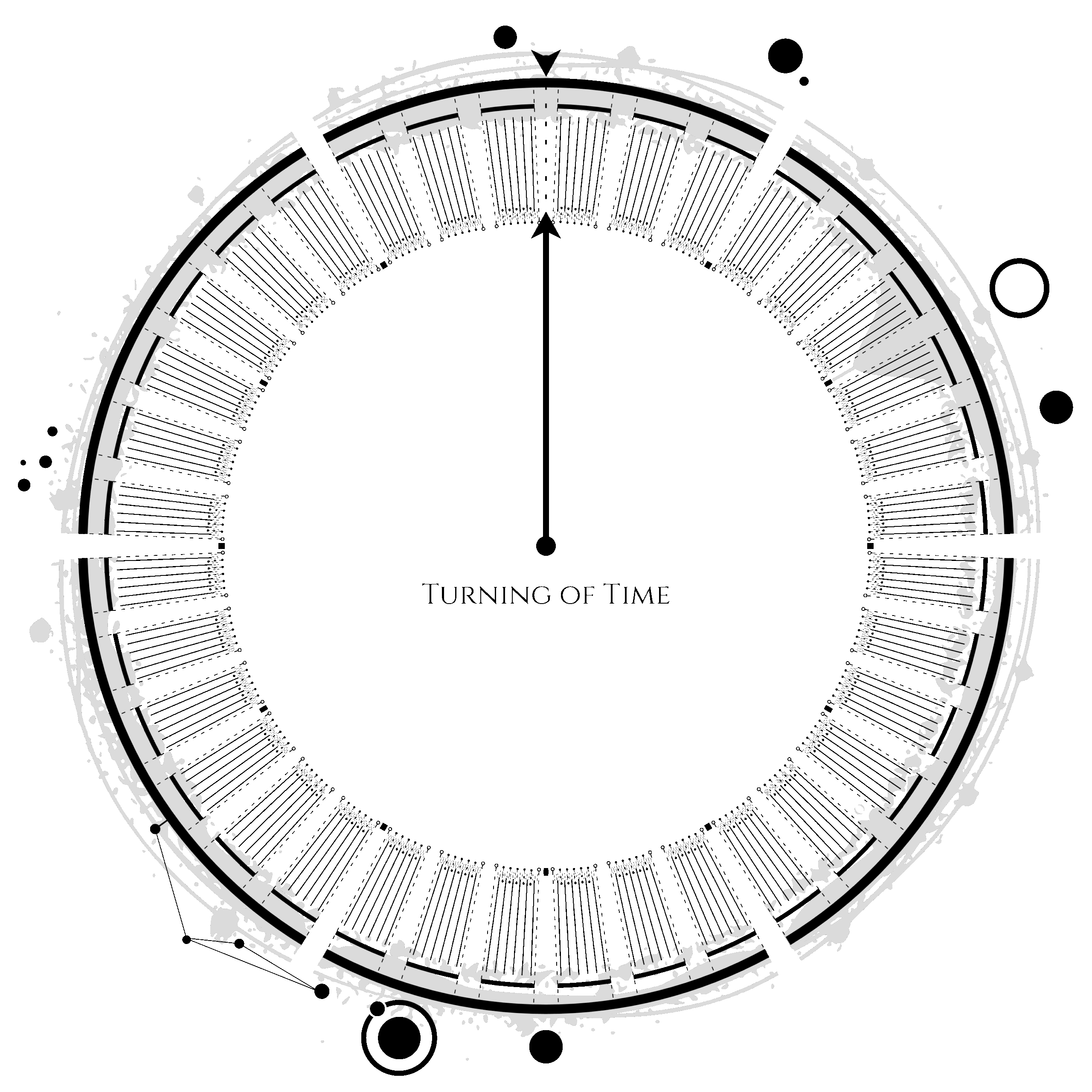On Orys, a ringworld that rotates endlessly through the void, the passage of time reflects the motion of the world itself.
To honor this, I designed a calendar that doesn’t just count the days and years but turns like the world it belongs to.
This is the Turning of Time calendar. Visually designed to represent Orys rotational nature. Let’s break it down.
Layout

The calendar is built in concentric rings, rotating like a great cosmic clock:
- Outer Ring – Years
- Second Ring – Months
- Third Ring – Weeks
- Innermost Ring – Days
Each unit of time is nested within the larger one. As the calendar turns, days fill weeks, weeks fill months, and months complete the circle of a year.
A year in Orys is 216 days long, divided evenly into:
- 6 months
- 36 weeks
- 216 days
The symmetry of this system mirrors the engineered precision of a ringworld.
Months of the Year
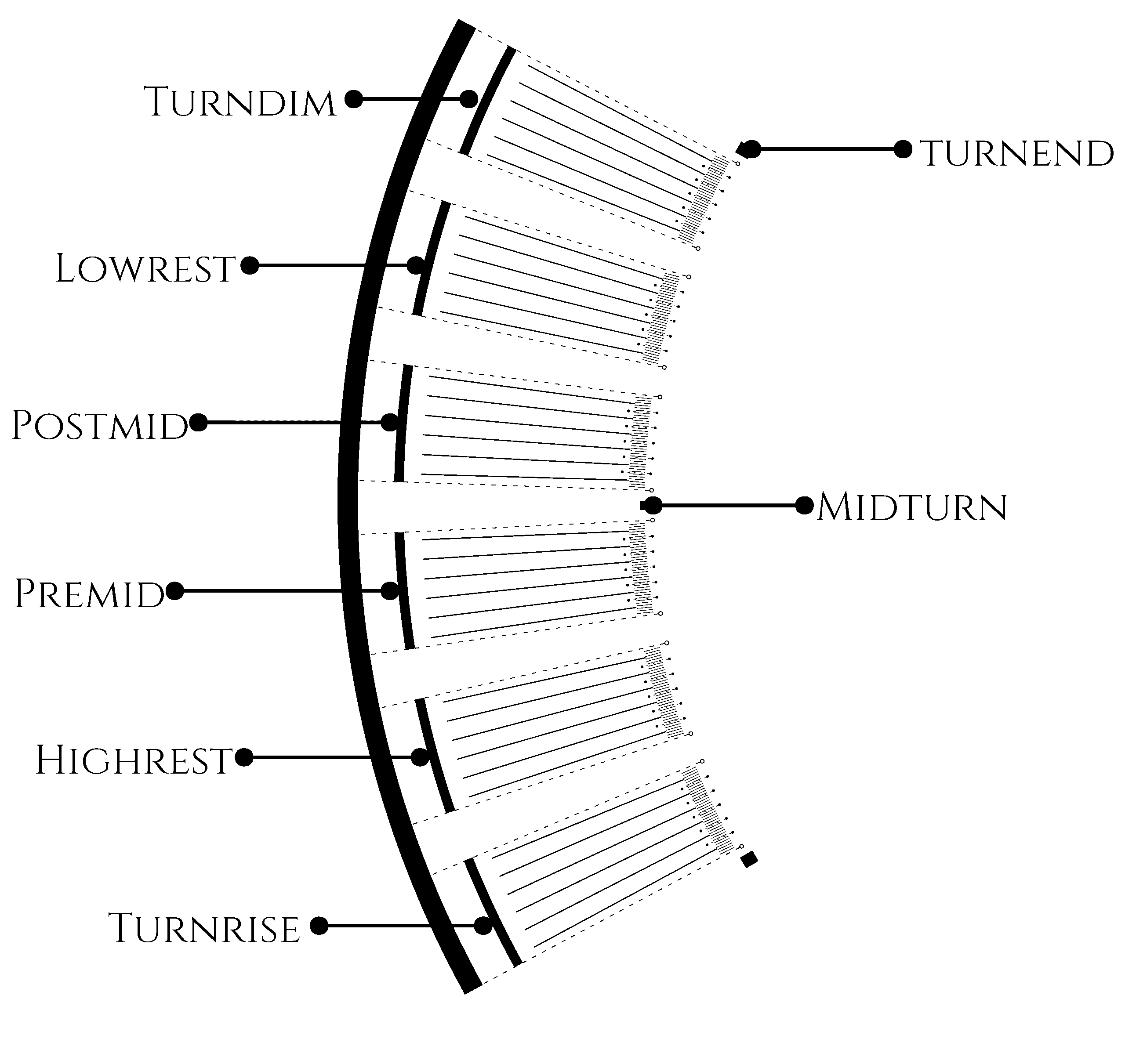
Each year has six months, and each month marks a different stage in the turning of time:
- Turnrise – the year awakens, beginnings take shape.
- Highrest – energy and growth at the height of the cycle.
- Premid – the approach to the year’s turning point.
- Postmid – the decline after the midpoint, transition begins.
- Lowrest – A time for stillness and recovery.
- Turndim – the fading of the year, a dimming before renewal.
Two important markers divide the year further:
- Midturn – the precise middle of the year, lying between Premid and Postmid.
- Turnend – the final close of the year, the threshold before Turnrise begins again.
This cycle mirrors both the engineered rotation of the ringworld and the natural flow of life on Orys.
Weeks
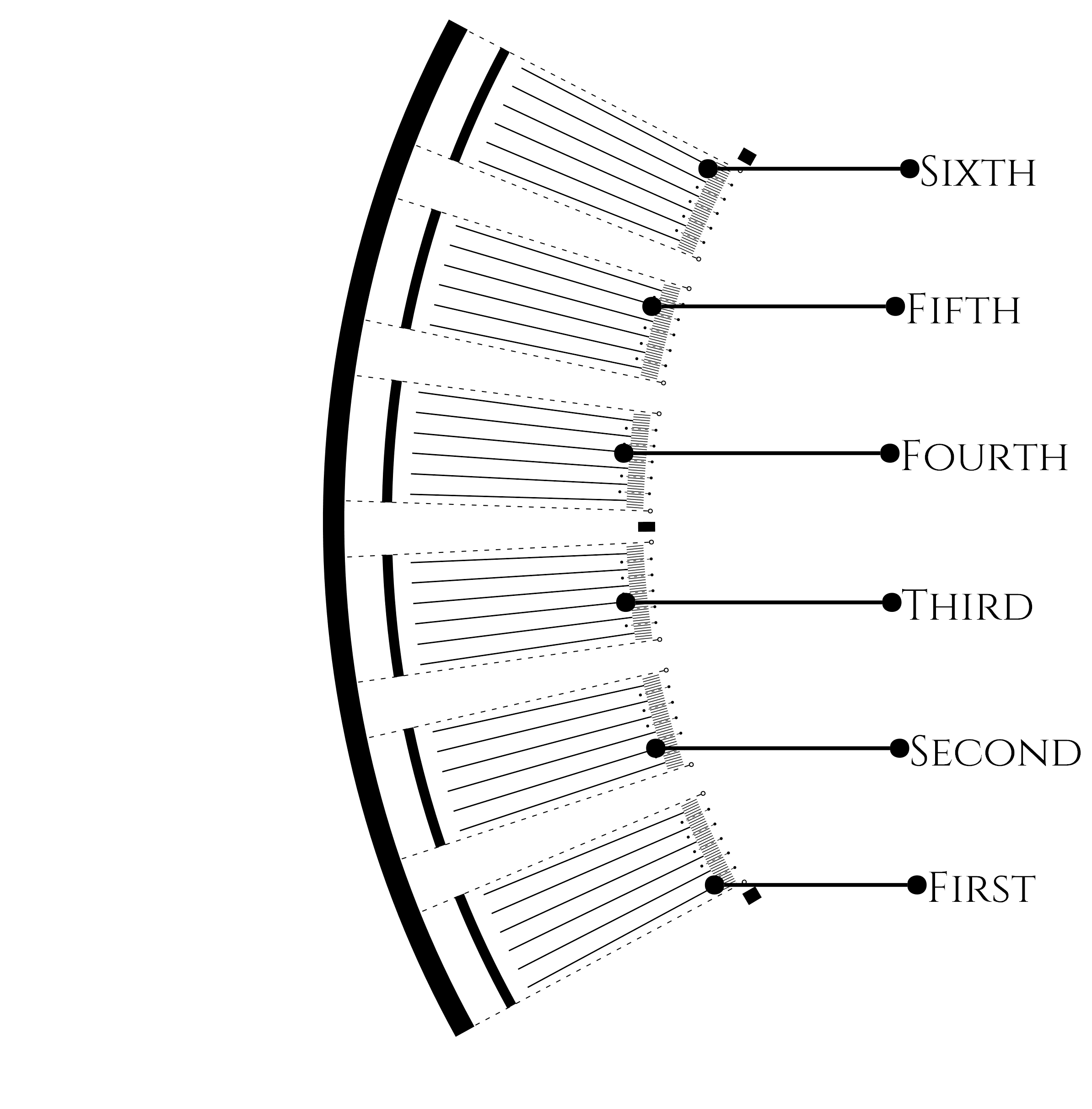
Each month is divided into six weeks, named simply and sequentially:
- First
- Second
- Third
- Fourth
- Fifth
- Sixth
Days
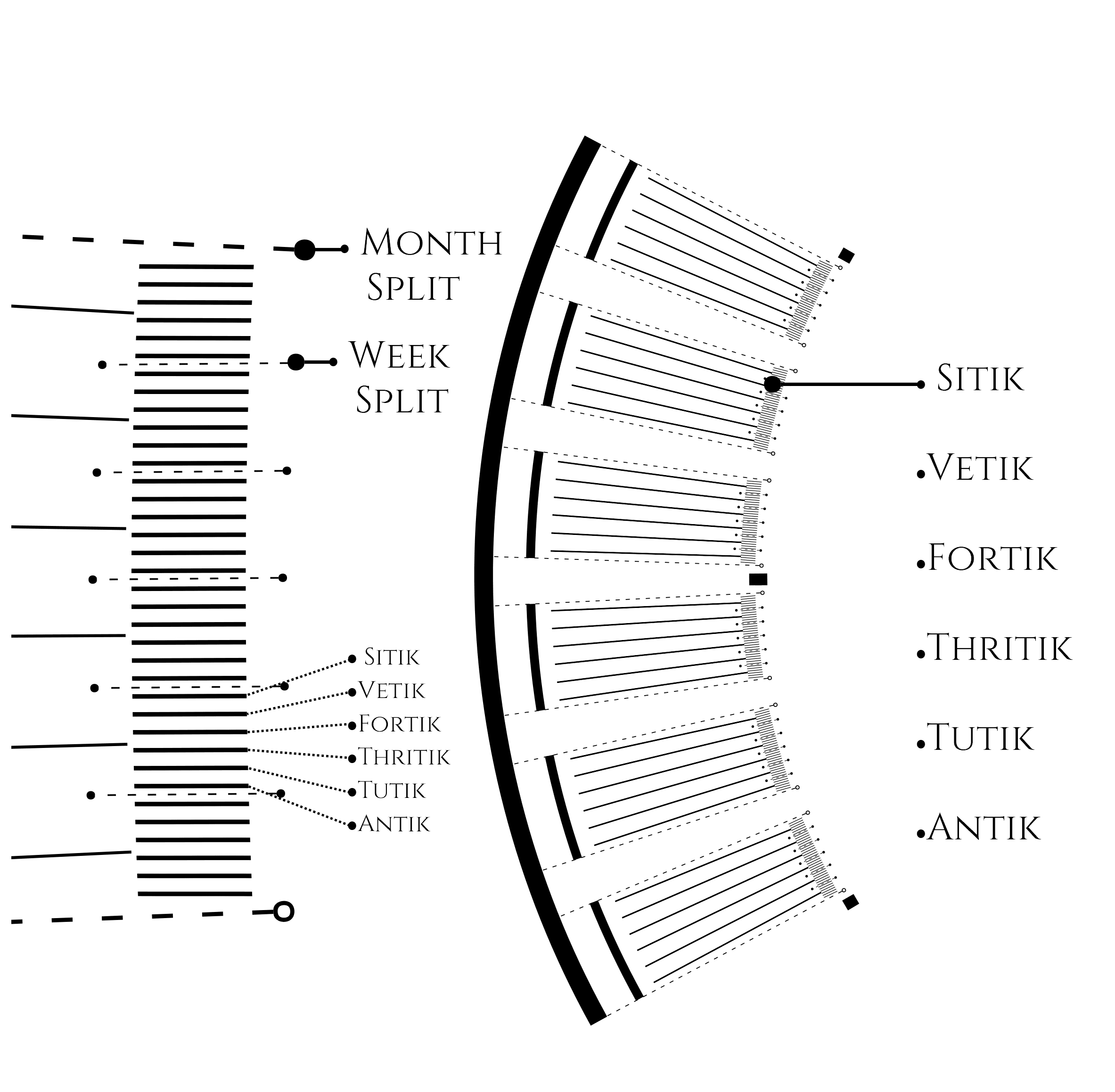
Each week contains six days, each with its own name:
Sitik
Vetik
Fortik
Thritik
Tutik
Antik
This sixfold rhythm repeats steadily throughout the year, a constant cadence to the turning of time.
Reading a turn
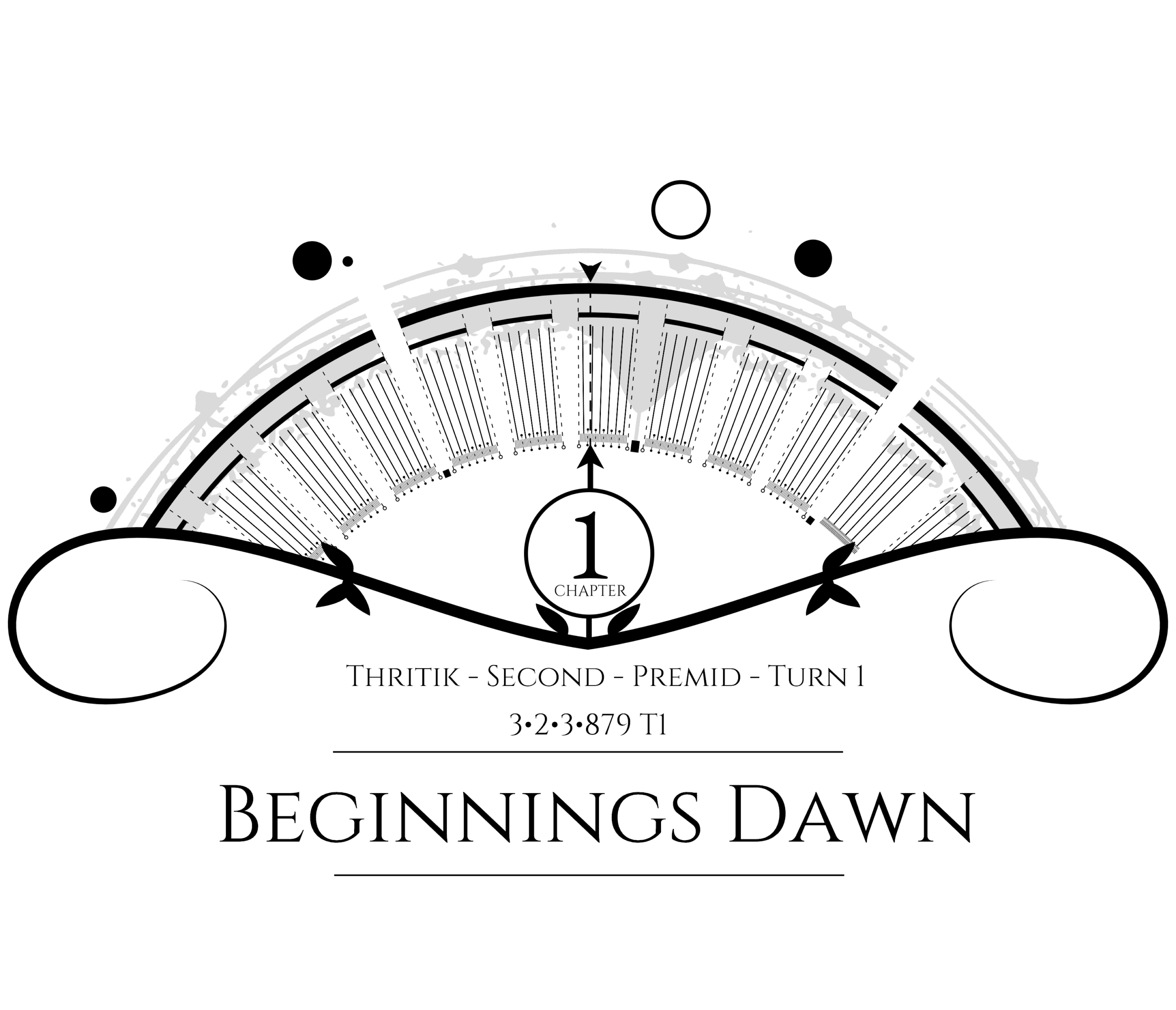
So, how does this calendar actually look when written out? Let’s walk through an example.
The image above shows a date recorded as:
Thritik – Second – Premid – Turn 1
This breaks down like this:
- Day: Thritik (the 3rd day of the week)
- Week: Second (the 2nd week of the month)
- Month: Premid (the third month of the year, leading into the great midpoint)
- Turn: 1 (the first year in this recorded era)
Put together, this places the event precisely on:
The 3rd day of the 2nd week of Premid, in the 1st Turn of Time.
The numerical shorthand for this date is also shown:
3·2·3·879 T1
- The first number (3) marks the month (Premid is the 3rd month).
- The second number (2) marks the week (Second week).
- The third number (3) marks the day (Thritik is the 3rd index in the six-day cycle).
- The fourth number (879) could track cycles, events, or chapters depending on context (here, it is tied to the story framework).
Finally, T1 refers to the current Turn (the 1st year in this reckoning).
Why a Rotating Calendar?
Because Orys itself rotates, this calendar isn’t just a method of timekeeping — it’s a reflection of the world. Time here doesn’t move in a straight line. It turns.
- Days tick forward like the gears of a great clock.
- Weeks cycle neatly.
- Months flow like phases of a wheel.
- Years revolve endlessly, returning always to Turnrise.
This makes the Turning of Time intuitive, thematic, and deeply tied to Orys’ identity as a ringworld.
Closing Thoughts
The Orys calendar is more than practical; it is symbolic. It reflects balance, symmetry, and the eternal rotation of the world. With its six months, six weeks per month, and six days per week, it gives Orys a natural, cyclical rhythm that resonates with its inhabitants and a shared measure of existence with the steady Turning of Time.
With warm regards,
Alexander N Graham
